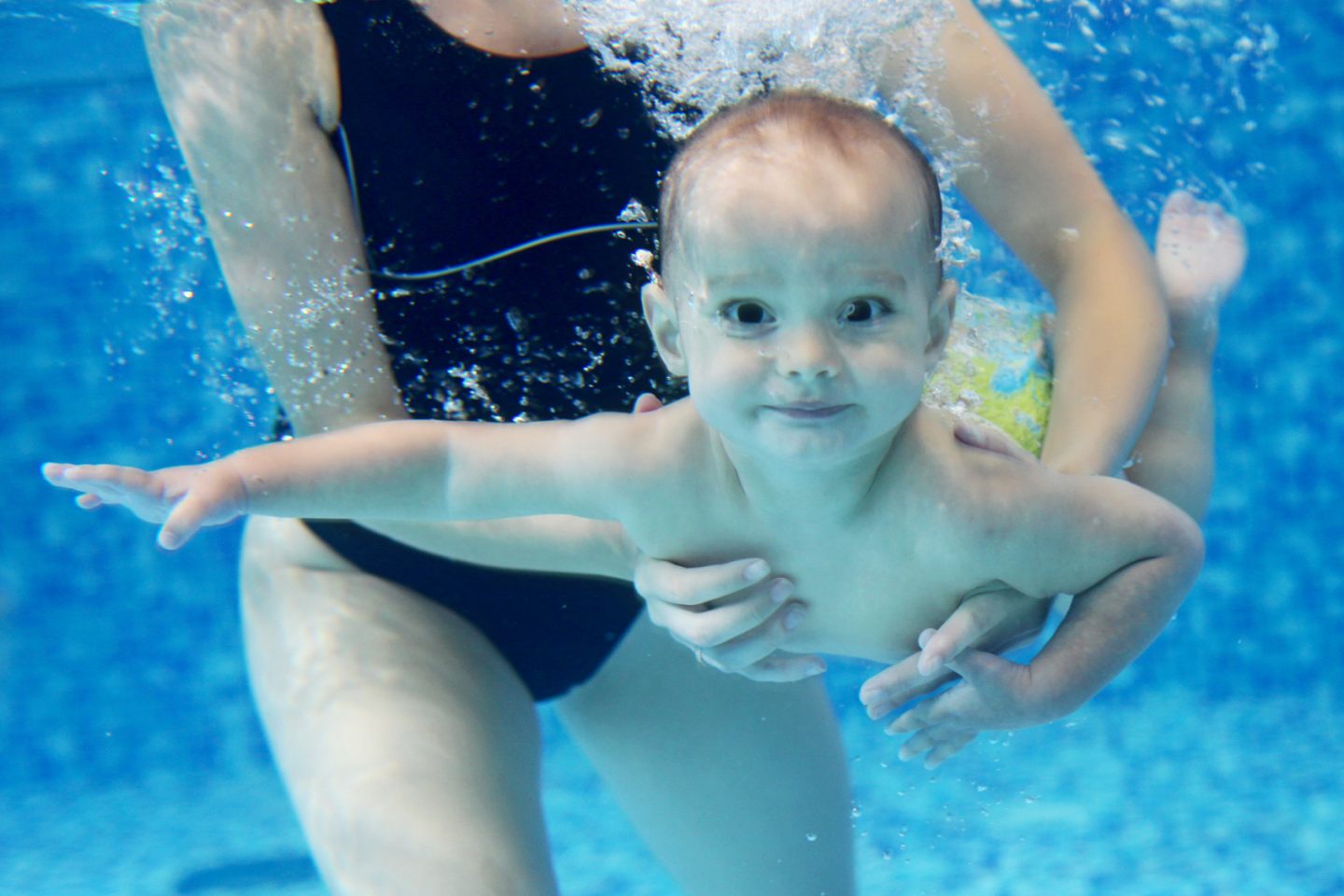
Introducing your baby to the water can be an exciting and memorable milestone. Swimming is an important life skill, and early exposure to water can also enhance their physical development, coordination, and mental well-being.
As you gear up for this new adventure, it’s essential to ensure that both you and your baby are well-prepared. Here’s a guide to ensure a positive and safe first swimming experience for your little one.
Assess Your Baby’s Readiness
Determining the ideal age to introduce your baby to swimming lessons varies individually. Generally, infants can learn to swim as early as one year old.
However, it’s not just about reaching a certain age; readiness plays a crucial role. So, observe your child’s reactions during bath time; enjoyment and comfort in water can be good indicators that they might be ready for a more structured water environment under professional guidance.
Moreover, it’s important to consider your baby’s health, emotional development, and physical abilities before taking the plunge into formal swimming lessons. This ensures a positive and safe introduction to the aquatic world, tailored to your child’s unique pace and needs.
A conversation with your pediatrician can be helpful. They can assess your baby’s overall health and development and advise if swim lessons are appropriate at this time.
Select the Right Swim School
Choosing the right school for swimming lessons for babies is paramount. Look for accredited programs with experienced, certified instructors who specialize in teaching infants. A good program should offer a warm, friendly environment and maintain small class sizes to ensure individual attention.
Safety is also crucial, so check if the pool meets health and safety standards, including water quality and temperature and pool chemicals.
Know Health And Safety Measures
When preparing your baby for their first swimming lessons, it’s essential to prioritize health and safety. Here are some key points to consider:
- Baby’s Health Check: Ensure your baby is healthy before attending swimming lessons. Avoid the pool if they have any signs of illness, fever, or infection, such as ear infections or open wounds.
- Post-Vaccination Wait: Wait at least two weeks after your baby receives vaccinations. This waiting period helps avoid discomfort or potential reactions in the water.
- Hydration: Just like adults, babies can get dehydrated during a physical activity. So, offer small sips of cool water throughout the day leading up to the lesson, and bring a bottle of water to the pool for them to drink in between breaks.
- Skin Protection: Apply suitable waterproof sunscreen to protect your baby’s sensitive skin from chlorine and sun exposure.
- Appropriate Swimwear: Use a proper-fitting, waterproof diaper designed for swimming to prevent any leakage and ensure comfort in the water.
With these tips, you can create a safe and enjoyable first swimming experience for your baby.

Prepare Mentally and Physically
Preparation for the first swimming lesson starts at home. Begin by making bath time fun and interactive. You can use toys and play games to make your baby associate water with joy and relaxation. Then, gradually introduce small amounts of water over the head to lessen fear or surprise during the lessons.
Physically, ensure your baby is well-rested and has eaten a light meal about an hour before the lesson. A tired or hungry baby might feel irritable and less cooperative in the water.
Pack the Essentials
A well-packed swim bag ensures that you’re prepared for any situation. Essentials include a waterproof diaper for your baby, a comfortable swimsuit, a towel, a change of clothes, a hat for sun protection if the pool is outdoors, and water-resistant sunscreen. Also, pack a snack and a bottle of milk or water for after the lesson, as swimming can make your baby hungry.
Build a Routine
Consistency helps in building confidence and familiarity. So, consider scheduling the lessons at the same time each day or week to establish a routine. You can also practice the skills learned during the lessons in the bath at home to reinforce the learning process.
Foster a Positive Environment
Your attitude towards water and swimming has a significant impact on your baby. If you’re apprehensive, your baby will likely sense it and react similarly. So, show support by approaching the lessons with enthusiasm and confidence. Don’t forget to praise your baby’s efforts, no matter how small, to build their self-esteem and encourage a positive outlook towards swimming.
What to Expect During the Lesson
The first lesson is more about acclimatization rather than actual swimming. So, hold your baby close to reassure them and maintain eye contact. Follow the instructor’s guidance, but also listen to your baby’s cues. If they seem overwhelmed, it’s okay to take a break.
Encourage but don’t force participation. The goal is to build positive associations with water, not fear. Remember, each baby adjusts to water differently; patience is key.
Post-Lesson Care
Following your baby’s swimming lesson, here are some essential steps for their care:
- Rinse your baby with fresh water to remove chlorine or salt, dry them thoroughly, and dress them warmly.
- Offer a snack and a drink to replenish their energy.
- Use this time to cuddle and provide positive reinforcement about the day’s experiences.
Remember, each baby’s response after a swimming lesson can vary. Some may be energized, while others might be tired. Pay attention to your baby’s cues and give them the rest or playtime they need after their swim.
Key Takeaways
Preparing your baby for their first swimming lesson involves more than just showing up to the pool. It requires careful planning, patience, and a positive attitude.
Remember, each baby’s learning curve is different. Some may take to the water naturally, while others need more adjusting time. So, monitor your baby’s progress and communicate with the instructor about any concerns or adjustments needed in the approach or pace of the lessons.







